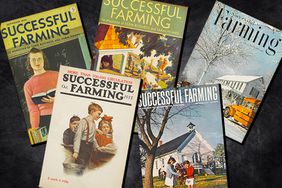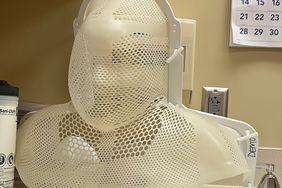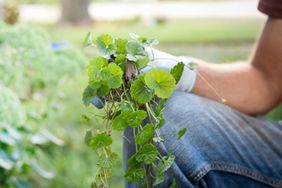:max_bytes(150000):strip_icc()/102347483-ab54da5e81f74b2db85f85337e95ce94.jpg)
Dotdash Meredith
Once you’ve grown and cut your flowers, it’s time to have fun creating an arrangement! Follow these general design tips, but let your imagination run wild!
Start with your focal point flowers, like big peonies or sunflowers. Then add foliage like leaves or herbs. Finally, fill in the gaps with accent flowers and other elements. Include twigs, ornamental grasses, or berry-laden vines.
Pretty perennials for cutting
When it comes to color, go with a cohesive theme, like shades of pink, or mix it up for a vivid wildflower look. Colors that are across from each other on the color wheel, like purple and yellow, also make pleasing combinations.
:max_bytes(150000):strip_icc()/100916764_1-a190b427dca14ebc837c3ce6166244e4.jpg)
Dotdash Meredith
Before you begin, have a general shape for your arrangement in mind. Include elements of varying height, and balance the width so it’s not top-heavy. Add weight to your vase if needed.
:max_bytes(150000):strip_icc()/101174875_1-75ee5ac5b33c4a00801b61f29a5f9853.jpg)
Remember, not all flower arrangements have to be big and ornate. Sometimes, a row of bottles each holding a single stem fits the bill.
:max_bytes(150000):strip_icc()/100916750_1-244718f99a4f4454974c27033d2d87b5.jpg)
You can really get creative with your containers. If it can hold water (or water-soaked foam), it can be a vase! Buckets, teapots, fishbowls, foil-lined Chinese takeout boxes, wine bottles, seashells, and even fruit will do! Wouldn’t a watermelon vase be perfect for a summer picnic?
:max_bytes(150000):strip_icc()/100916777_1-8c47a0e5a29547b8ae3c21afbdc70c21.jpg)
:max_bytes(150000):strip_icc()/LisaFoustPrater-5d5284849acc417c8678324f9c660161.jpg)
:max_bytes(150000):strip_icc()/1000319291-85c8858032844dbe8d9ce782ece3055d.jpg)
:max_bytes(150000):strip_icc()/BKS053612_preview-0896bc112b664517997303c789b1d37d.jpg)
:max_bytes(150000):strip_icc()/100326245_1-35f40cd5ec34481fbd43202dd563708c.jpg)






